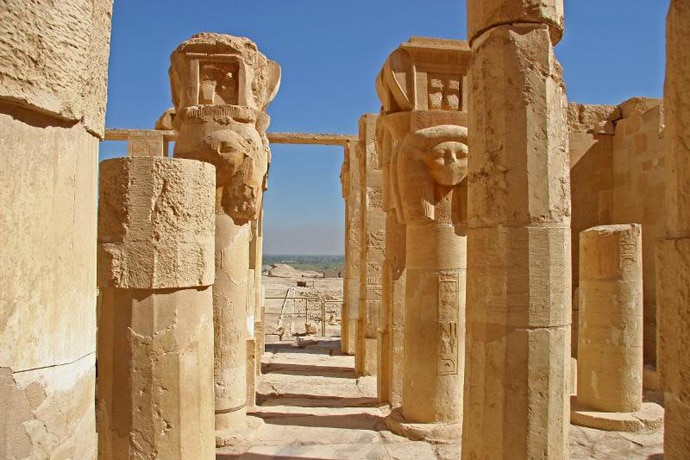What ISIS exploding a 3,000-year-old temple says about wanting a fanatic majority

Words of Iraqi National Congress chief Ahmed Chalabi flashed through my memory when I saw an Islamic State video showing the destruction of a Babylonian temple in the northern part of the restive country.
Insurgents blew up the 3,000-year-old temple of Nabu, the Babylonian god of wisdom, in the ancient Assyrian city of Nimrud in Northern Iraq and posted the evidence of their assault online.
I had travelled to Iraq in 2007 to cover Art of Living founder Sri Sri Ravi Shankar's tour of the war-torn nation.
Somewhere in my mind, I wanted to see a Sikh historical site in Baghdad that news reports at the time claimed had been damaged in the conflict. It was a shrine commemorating Guru Nanak's visit, located between a graveyard and a railway line.
And it was during a meeting with Chalabi one evening that I broached the idea of visiting the shrine, which perhaps symbolised Iraq's secular history.
 |
| ISIS razed down the ancient city of Nimrud where the Tower of Babel was believed to have been built. |
"Where is it located? Can you find out? We should go there," Chalabi asked, with curious eyes. I quickly telephoned a senior leader of the Shiromani Gurdwara Parbandhak Committee (SGPC), Sukhdev Singh Bhaur, who then gave me the exact location of the shrine - along the Tigris river and near a train station. Chalabi was excited.
A powerful politician in Iraq then, he immediately ordered a military recce of that district. By the time he got an all-clear signal, it was night. We drove off in his cavalcade through the dark, desolate streets of the Iraqi capital under heavily-armed guard. We arrived there safely.
"It's locked," he said, pointing to the green-painted, iron door of the holy compound.
"Do you want us to break it open?"
"Yes," I replied. A soldier then unbolted it with the stock of his gun. Inside, there was no trace of anything Sikh. But the shrine commemorating a revered Muslim figure on the same complex was intact. The roof of the room marking Guru Nanak's stay had been razed to the ground, its marble floor pulled out.
By now, Chalabi had been briefed about who Guru Nanak was and how the shrine was destroyed.
"It has unfortunately been wiped out by fanatics because they thought it was against Islam," the Iraqi leader said. He promised to rebuild it.
With one statement, he tried to send a global message that his nation, post war, was committed to preserve and safeguard secularism. Nine years down the line, we can see it was easier said than done. Chalabi, a key player behind the invasion of Iraq in 2003, died last year of heart failure.
In hindsight, his comments on the devastated ground that once bound two philosophies together were perhaps prognostic. If I dissect what he said nine years ago, much before the rise of the ISIS, I would say he perhaps summed up what drives what I call majoritarian aggression worldwide.
It's just not about an obscure Babylonian temple or a Guru Nanak shrine in the remote corners of Iraq.
It's about the use of aggression by a majority to finish off any parallel thought in its jurisdiction. Precisely, it is fanatic expansionism that manifests itself across the globe in different shapes and forms, big and small.
In countries like Iraq or parts of Africa, it is expressed through bombs and guns. Low-scale attacks on minority institutions - even in advanced nations like Germany or the US - are again a demonstration of the strong undercurrents of the same extremism among their majorities.
It's then a grave error of judgment to downplay any such raid on non-native religions in developed countries as cases of mistaken identity. In places like India, where the state again is very much in control, hardline right-wingers, emboldened by national power, are carrying such raids out via an ideological warfare.
Why covertly force an entire spectrum of cultural diversities to read ancient texts or perform exercises they don't relate with ideologically? A community that is a majority in India is in a minority elsewhere and vice versa.
And wherever minorities are able to assert their identities, their assertion is more defensive than offensive. So secularism comes under threat when fanatic majoritarian aggression, either physical or ideological, is adopted as a tit-for-tat tactic in an officially secular state to retaliate for the same evil elsewhere.
And, by secularism, I mean the generic notion of religious freedom, not the French principle of laïcité that separates the church and the state.

